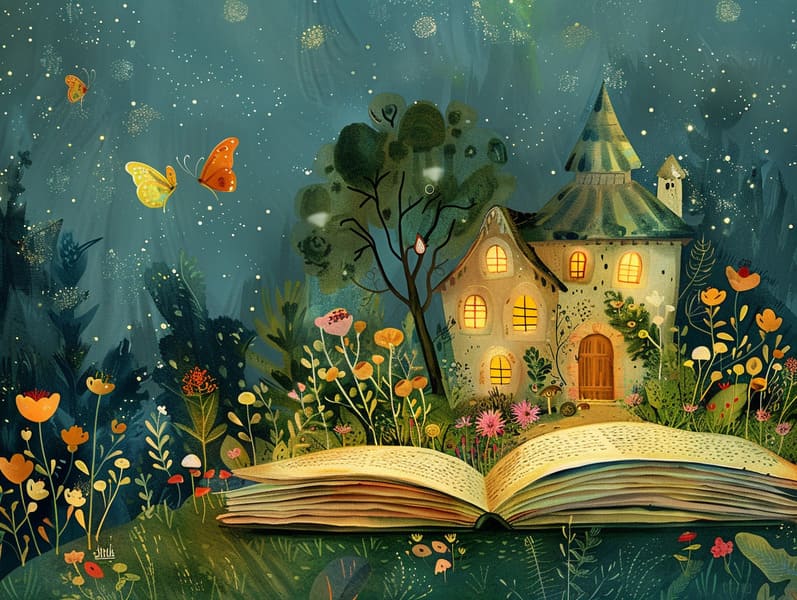The Evolution of Short Fairy Tales with Their Lasting Appeal.
The Evolution of Short Fairy Tales with Their Lasting Appeal.
Blog Article

Famous fairy tales have legendary status. These narratives have been conveyed from one generation to the next millennia before they were ever documented. They sprang from a variety of backgrounds, including American traditions. They were initially told among adults, often carrying themes and messages reflective of the societal norms and beliefs of the time.
The Brothers Grimm, Jacob and Wilhelm, were among the first to collect and release many of these beloved narratives. Their volume, "Grimm's Story Collection," included narratives like "The Story of Cinderella," "The Story of Hansel and Gretel," and "The True Story of Snow White," which have since become pillars in the world of classic fairy tales. Similarly, Hans Christian Andersen's magical narratives, such as "The Mermaid's Tale," and "The Little Duckling," have touched hearts worldwide, securing their place in the pantheon of iconic fairy tales.
Though they are old, fairy tales remain as relevant as ever, especially as nighttime stories for kids. These magical stories are now available in many formats, including colorful picture books, whimsical animations, and free fairy tales online.
Their lasting presence can be connected to several delightful features:
Important Morals: Old fairy tales often teach important moral lessons. Narratives like "The Shepherd Boy and the Wolf" teach the virtue of truthfulness, while "The Hare and the Tortoise" stress the virtues of steadfastness and unpretentiousness. These stories offer young readers clear distinctions between right and wrong, guiding their moral compass in a tender yet meaningful way.
Empathy and Understanding: Traditional fairy tales frequently illustrate heroines facing obstacles and hardships, prompting children to empathize with their struggles and celebrate their triumphs. For instance, "Beauty and Her Beast" points out the necessity of seeing inner beauty to know the inner spirit of a soul, nurturing empathy and understanding.
Cultural Recognition: Many classic fairy tales are infused with the cultural contexts from which they emerged. Reading these tales can provide intriguing perspectives into different customs, encouraging a sense of cultural respect and recognition.
Imagination and Innovation: The imaginative elements in fairy tales—wizardry and magic—enliven children’s fantastical thinking. These tales bring readers to otherworldly realms, enlivening innovative dreams and a sense of awe that persists a lifetime.
Traditional fairy tales are not only spellbinding but also enlightening. They function as magical tools in building various thinking and feeling skills in young ones. When ancient fairy tales are spoken, they improve speaking abilities by teaching new terms and meanings and sophisticated sentence structures. This practice also advances hearing perception and mindfulness, as the young follow the story, anticipating to see what happens next.
Furthermore, analyzing the themes and characters of classic fairy tales can advance reasoning skills and cognitive skills. Young ones are shown to notice patterns, foresee events, and figure out cause and effect. These talks also promote children reveal their thoughts and feelings, adding to their emotional intelligence.
In today’s high-tech era, the prevalence of digital storybooks has made these narratives more within reach than ever. Online resources and web apps offer broad selections of ancient fairy tales that can be seen or listened via anytime, anywhere. Fairy tales spoken are particularly popular, providing an interactive way for kids to take part in these charming tales. Sound books and spoken videos lead characters and settings to life, often augmented by bewitching melodies and harmonies that intensify the narrative experience.
The persistent attraction of traditional fairy tales lies in their ability to adapt to today's world while sustaining their central values. Contemporary modernizations of these narratives often integrate more diverse figures and modern settings, making them pertinent to today’s audience. However, the core values of heroism, charity, and justice remain unchanged, continuing to influence listeners of all ages.
Classic fairy tales also offer a sense of reassurance and comprehensibility. They put forth a well-ordered narrative with a definite beginning, middle, and end, often wrapping up with the closure of conflicts and the triumph of virtue over corruption. This certainty can be solacing for young readers, making known a sense of invariability in an unpredictable world.
Classic fairy tales continue to spellbind and educate new generations, maintaining their allure and significance in modern society. As children's bedtime stories, they offer a perfect blend of allure and teaching, backing moral values, empathy, and creativity. The abundance of free fairy tales online and the popularity of fairy tales recited promise that these ancient stories remain accessible to new generations.
By keeping and releasing these narratives, we continue to laud the rich tapestry of fables and cultural heritage. Whether you are perusing a vibrantly illustrated book, perusing a electronic library, or playing an voice book, the spell of Grimm's fairy tales is always within reach. These tales demonstrate of the persistent impact of stories and its ability to bond us across time and space.
Whether you are experiencing a richly illustrated book, perusing a virtual collection, or listening via an read-aloud story, the grace of famous fairy tales is always within reach.
These fairy tales emphasize of the unending influence of narratives and its ability to bring us together across epochs and places, casting a charm that charms and informs this site alike.